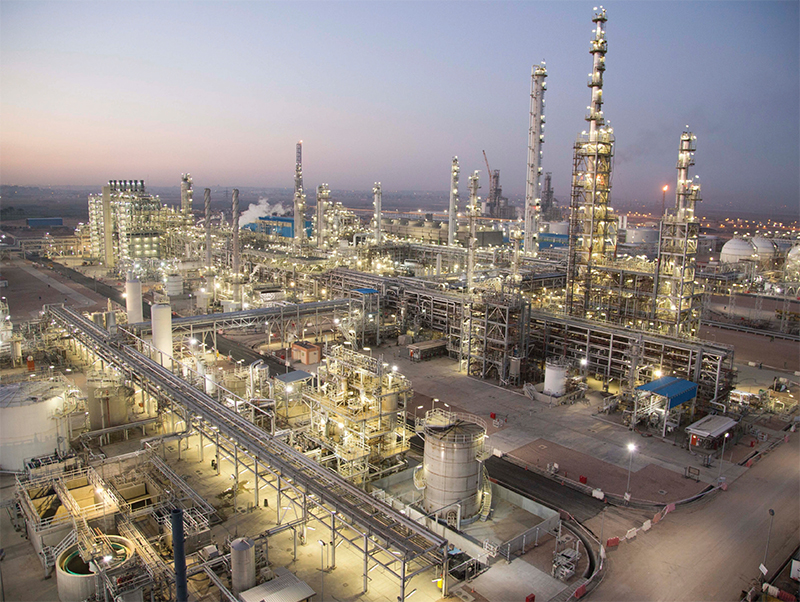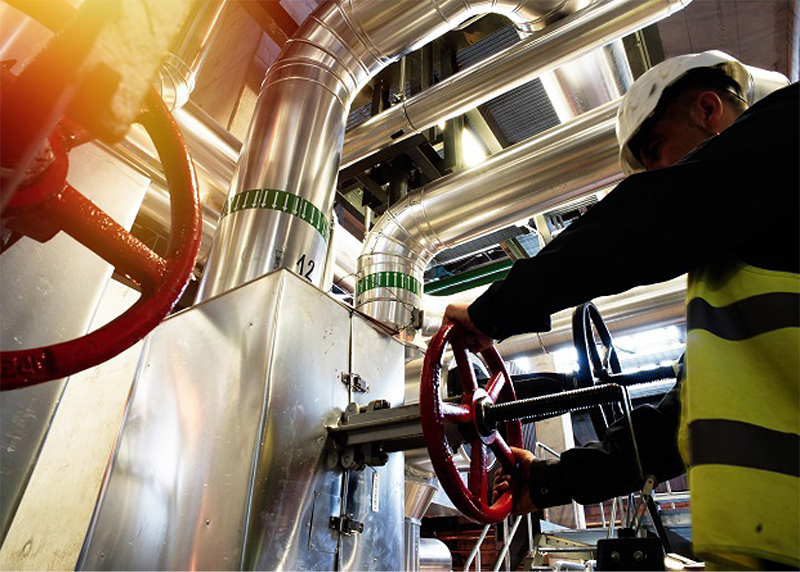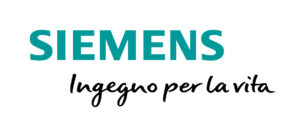How utilizing coatings and coating systems can maximize your engineering
 Jotun is a global player providing corrosion control solutions to chemical and coal to chemical plants. The group has 65 companies and 39 production sites all over the world, and more than 9800 employees. Jotun products are available in over 100 countries through branches, joint ventures, agents, dealers and distributors. The Italian branch has been present for about 30 years: Jotun Italia srl is based in Muggia, close to Trieste, has supplied coatings and services that extend the life, operational performance and flow assurance in plants and terminals.
Jotun is a global player providing corrosion control solutions to chemical and coal to chemical plants. The group has 65 companies and 39 production sites all over the world, and more than 9800 employees. Jotun products are available in over 100 countries through branches, joint ventures, agents, dealers and distributors. The Italian branch has been present for about 30 years: Jotun Italia srl is based in Muggia, close to Trieste, has supplied coatings and services that extend the life, operational performance and flow assurance in plants and terminals.
As an innovative player we lead the industry in coating technology and services including fire protection and performance coatings. Through its unique logistics hub and thanks to an extensive network of internal dealers and distributors, it supplies quality products throughout the territory of the Mediterranean Basin, for maritime, yachting and industrial protection markets. Jotun Italian forward-looking strategy is based on two key points: the branch has decided to invest massively in the development of its distribution network in its competence area, increasing, as a starting point, the number of dealers and distributors equipped with an industrial color-matching system: it guarantees greater efficiency and flexibility when it comes to the distribution service of the finished products in the same color, to the end customer. The second point focuses on the development of the technical skills of the internal distribution network.
 Every Jotun Italia dealer or distributor attends the professional training program, called ‘Paint school training’. These courses are taught by Jotun’s qualified technical staff to cover various topics, such as updating the Jotun product range for different sectors, technical skills and consultancy to support all the different projects.
Every Jotun Italia dealer or distributor attends the professional training program, called ‘Paint school training’. These courses are taught by Jotun’s qualified technical staff to cover various topics, such as updating the Jotun product range for different sectors, technical skills and consultancy to support all the different projects.
Designing a plant is a huge and complex task requiring a delicate balance between meeting production goals, maintaining budgets, increasing design life and ensuring all HSE concerns have been taken into consideration.
With such a complex project, the less critical design choices are sometimes given lower priority, and coatings are often placed in this category. But if selected and used correctly, coatings can have a huge impact on a plant and bring positive outcomes you didn’t think were possible.
Here are 5 ways coatings can be used to maximize your engineering design:
1. Cost effective material design
The chemical processes carried out in plants present a variety of challenges in terms of materials. Due to contact with corrosive substances and challenging operating temperatures, the materials used in a plant design have to be carefully selected. Exotic materials will often be needed to meet the particularities of a plant, which can increase the cost considerably.
By utilizing coatings to withstand environments with corrosive species and chemicals and reducing the risk of challenging conditions such as corrosion under insulation (CUI), it might be possible to reduce the use of exotic materials and thereby bring down the cost of materials used on the plant site.
2. Design life time expectancy and time between major maintenance
Traditionally, major maintenance requires shutting down production and going offline. However, by selecting high quality products, the time between major maintenance works can be extended, thus increasing the revenue. Decreasing the number of days offline greatly impacts profitability, with every day costs normally costing around $0.5–6 million.
While premium coatings come at a cost, when one compares that cost to the loss of profit generated by shutting down production, it seems minimal.
Selecting higher quality coatings can increase time between major maintenance works by anywhere between 2 to 5 years, depending on service conditions and operating environment.
3. Avoid unnecessary shut-downs
Since many coatings cannot be applied on structures operating at elevated temperatures, the plant must be taken offline for maintenance. By using coatings that can be applied on substrates operating at higher temperatures, maintenance work can be carried out on lifelines.
This can be the difference between making it to the next planned maintenance period or not. And while a planned shutdown period for carrying out maintenance is expensive, unplanned shutdowns have a severe impact on plant financials and company profits.
4. Optimize production capacity/production rates
In general, chemical reactions give improved yields and production rates when the reaction temperature is increased.
Increased operational temperatures can mean increased production rates. Likewise, periodic steam-out periods at elevated temperatures remove blockages and contaminations inside pipelines which in turn increases production capacity.
If the wrong coating is selected for the plant, there is a risk of coating damage if temperatures become too high.
While this might seem like a minor issue since hot areas are generally insulated, coating damage due to excessively high temperatures often occurs under insulation where they cannot be detected easily. The ensuing corrosion progresses rapidly and can often lead to leaks. Worst case scenario these undetected leaks can lead to fire and loss of lives.
5. Not all coatings are created equal
When coatings are considered in engineering design, it is critical that you consider what the manufacturers had in mind when the coating was developed. A coating that has excellent anti-corrosive performance on a marine vessel might not be suited to the chemical environment that you find on a chemical production plant. Likewise, a coating developed for structures operating at continuous high temperatures might fail miserably if it is put through many, rapid temperature cycles – especially if these cycles start going to the ultra low temperatures of LNG or other cryogenic processes.
When it comes to coatings there is no such thing as one size fits all, and careful thought and attention should be placed on selecting the most optimal product for your situation, as it can bring cost savings and increased safety and productivity to your business. Top 10 tips for processing plants to survive extreme conditions.
The conditions in which oil, gas and chemical companies now operate have become increasingly complex in the quest to find and exploit reserves, as well as refine the outputs, placing increasing demands on pipes, valves and hot structures within processing plants.
Here are 10 tips for surviving extreme conditions, including high temperatures, corrosion, cryogenic operations and fire.
1.For refineries to mitigate against risk of reducing runs and halting operations due to power outages, ensure roads for tanker trucks with deliveries of petroleum product and propane are gritted and pipelines have a protective coating against subzero temperatures.
2.Industrial fireproofing is an important facility safety measure that is recommended by external auditors. You will need to look at the different types of passive fire protection. Using mesh-free epoxy passive fire protection eliminates one risk element from the facility.
3.One of the challenges of process piping is that over time there can be build-up of contaminants inside the pipelines. This buildup reduces the internal pipe diameter, thereby limiting production capacity. Regular steam outs to remove such build-up ensures that production capacity is maintained. When selecting a coating, ensure that it can also withstand the higher temperatures of a steam out to avoid coating degradation and premature coating failure.
4.Processing plants and facilities are often near sources of chlorides. While pipes and valves can often be made from stainless steel, the combination of high temperatures and mechanical strain can give rise to chloride induced stress corrosion cracking. Choosing coatings that prevent chlorides from migrating to the steel surface can help mitigate this risk.
5.On facilities where there are thousands of kilometers of pipes, hundreds of pressure vessels and a multitude of processing operations, doing inspection work is a challenge. Doing a risk assessment to determine what are the most critical areas means inspections are more focused, ensuring that potential threats can quickly be identified and dealt with.
6.During a shutdown, time is of the essence. Having standard sections pre-painted with a temperature resistant zinc silicate in the warehouse means that these can quickly be replaced should the need arise. Since the sections are coated with a zinc silicate they will not corrode prior to installation. Depending on the usage conditions, the section can then be overcoated with a suitable coating system or left as it is.
7.Coloured top coats can be used for marking pipes. This can make installation faster and allow for quick identification of the pipe contents. These coatings are also UV-resistant, allowing for protection of epoxy coatings that suffer from UV degradation. 8.During the lifetime of a facility, things change. The value and cost of feedstocks and finished products change.
Parts of the facility might not go into operations and other parts might need to be more efficient. These types of changes can alter operational parameters such as pressure and temperature. While steel structures are generally engineered with ample safety margins to allow for this, this tends not to be the case for coatings. Why not design some safety margin into the coating system as well, to future proof your facility? Remember, upgrading the coating system is a fraction of the cost compared to staging, preparation and going off-line.
9.In extreme conditions, moisture gets into insulated areas and cannot readily escape. This creates hidden corrosion problems in the form of corrosion under insulation (CUI). Using a suitable coating system that has been tested and approved by third parties for CUI conditions means you can prevent the water from reaching the steel substrate, greatly reducing the risk for hidden corrosion problems under thick layers of insulation and cladding.
10.Generally, when a facility is being built, or if maintenance is being carried out in remote areas, coated structures need to be transported to the construction site.
Often this creates transportation damages on the coated sections. Applying coatings that minimize transportation damages, or a zinc silicate as the first coat, reduces or sometimes even removes the need for recoating.
For more information, please contact our customer service specialist Kevin:
kevin@jotun.com.
https://www.jotun.com/it/it/b2b
customer.service@jotun.it














